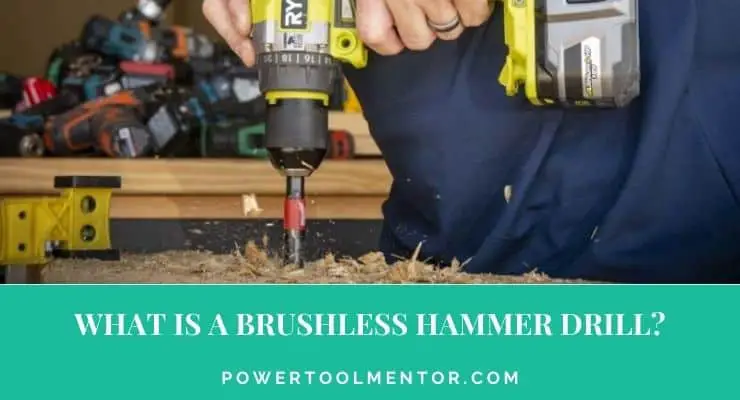A brushless hammer drill is a hammer drill that adds a mechanism, very little weight, and length giving the drill a chipping motion while using a brushless motor to convert electrical power into mechanical motion as to spin. A brushless hammer drill uses a motor that does not have any physical connections between its moving parts because they have circuit boards that control the entire spinning process as you use the drill.
Brushless Hammer Drill
What is it used for?
A hammer drill is specially designed for drilling holes into hard material such as bricks, rocks, concrete, and other masonry. It comes with two settings that you can toggle between – a hammer and a drill/driver. You can turn off the hammer function and the machine can be used as a drill driver with the right drill bits and vice versa. However, most people don’t use them as a drill/driver because they are heavier than normal cordless drill/drivers.
How does it work?
A brushless hammer drill uses a rotational force that creates a more powerful hammering force that can drive a screw straight down with the power similar to using a hammer to pound the back of the drill. This makes them spin and hammer concurrently enabling them to dig deeper into har materials like concrete slabs and masonry.
What does the term brushless mean?
This is usually a confusing term to most people when they hear it because they don’t know how a drill works in the first place. To understand it, we first have to understand the history of a power drill. The first power drills to be created came with a motor system that was made up of 4 different parts – magnets, carbon brushes, armature, and a commutator. All these parts worked together to create the drilling motion a drill needs to operate. This earlier motor was called the brushed motor notably because it used a carbon brush. These carbon brushes are found on the motor’s fixed part and they ensure optimal transmission of power to the rotating part of the motor which in turn enables switching without sparks.
Now, a brushless motor eliminates the use of the carbon brushes and the commutator hence the term ‘brushless motor’. A brushless motor comes with magnets and is made up of two main parts – a rotor and a stator. A rotor is a part that rotates with permanent magnets glued to it, while a stator is the fixed part that doesn’t rotate and has electromagnets. Most brushless motors come with an inbuilt internal rotor that can turn up fast up to speeds of 100, 0000 RPM. This reduces friction and heat generated, helping it to work more efficiently than a traditional brushless motor. The last part that forms a brushless motor is the coils that are fixed in the motor and don’t rotate like in brushed motors.
Types of brushless motors
Brushless motors exist in two main categories – Inrunner and Outrunner motors. The difference between these two is that for Inrunner motors, the rotor is on the inside while in Outrunner motors; the rotor is on the outer area. Outrunner motors are often used on hammer drills because they’re able to produce more torque that allows them to spin and hammer at the same time. This enables the hammer drill to dig deeper into hard surfaces like masonry and concrete.
The merits and demerits of a brushless hammer drill
| Merits | Demerits |
| More powerful | Costly |
| Versatile | |
| Long-lasting | |
| More energy efficient | |
| Less noisy |
For example, check our full review of Dewalt DCD709 Brushless Hammer Drill Driver.
Conclusion
Brushless hammer drills despite their expensive price tag are the way to go as you get to save on costs such as energy because they’re energy-efficient. Besides, they’re more powerful and offer versatility. With the right drill mode, you can use them as a regular drill/driver despite their weight downside. Also, since they are more powerful, they need more power. This means that you need a stable power supply that might force you to go for the corded hammer drills over the cordless ones that use batteries as opposed to power directly from the source.
FAQs
Are brushless hammer drill AC or DC powered?
Brushless hammer drills are DC-powered because the motor converts the electrical power into direct current.
What’s the difference between a hammer drill and a regular drill?
Both drills use a continuous rotational force to drive a screw. The main difference is the amount of force generated and what material it can drive it into. While a regular drill is used to drill and drive a screw into materials like wood, metal, and drywall, a hammer drill is useful for heavier materials including concrete and masonry. However, a hammer drill can also be used as a regular drill when used with the right drill mode and drill bits.
